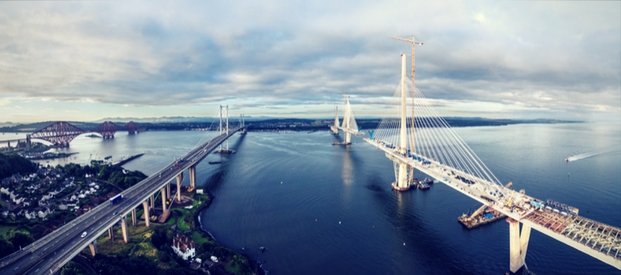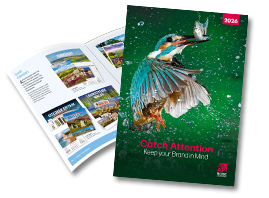Queensferry Crossing Opens – Three Bridges Spanning Three Centuries
With traffic already allowed over and only days to go before the official opening of the new Queensferry Crossing, we take a look at this new bridge and its magnificent setting.
Taking its place alongside the two older bridges, the new Queensferry Crossing is a graceful structure and an innovative feat of engineering. It crosses the Firth of Forth side by side with the 1960s-built Forth Road Bridge and the famous Forth Bridge, completed in 1890. These three bridges spanning three centuries are an unforgettable landmark of Scotland.
21st century: The Queensferry Crossing
The newest of the bridges, the Queensferry Crossing, is an astonishing structure whose three glorious ‘sails’ make a bold statement across the river. It is a cable-stayed bridge, constructed using the same method as France’s Millau Viaduct (the world’s tallest bridge), and the beautiful Erasmus Bridge in Rotterdam.
The cables of the Queensferry Crossing are arranged in an overlapping design which not only looks amazing, but also provides extra stiffness to the structural system, allowing the deck to be lighter and the three towers to be more slender. Overall, this gives the bridge its incredibly graceful appearance.
20th century: The Forth Road Bridge
When the Forth Road Bridge opened in 1964, it was the fourth longest suspension bridge in the world. Its design was based on that of San Francisco’s famous Golden Gate Bridge, the world’s most-photographed and longest suspension bridge.
Officially the first person to walk across the Forth Road Bridge was the steel-erecting foreman, Jim Lafferty, who crossed on the catwalk. But in fact two young engineers, Hector Woodhouse and Alan MacDonald were so determined to be first that they did a tightrope walk along the cables before the catwalk was completed. Health and safety rules were not as strict then as they are today!
As the new bridge opens, road traffic moves to the Queensferry Crossing, leaving the Forth Road Bridge for pedestrians, cyclists and public transport, providing the opportunity for a fabulous walk or bike ride with views of the river and two fine bridges, one either side.
19th century: The Forth Bridge
Before the Victorians built the Forth Bridge, the only way to cross the river was by ferry. However, with the spreading of the railway network in the mid-1800s, the need for a bridge became more pressing.
A young engineer, Thomas Bouche, devised a plan for bridges across the rivers Tay and Forth, but this came to an abrupt and tragic end in 1879 when the Tay Bridge collapsed in a storm, killing 75 train passengers. Work halted on the Forth Bridge until John Fowler and Benjamin Baker came up with the design for the Forth Bridge we know today. It was a significant development in railway engineering, being the first steel bridge and longest cantilever bridge span in the world at the time.
Recognised the world over for its design and construction, it is also known for its rigorous maintenance regime: ‘painting the Forth Bridge’ has become a familiar expression for a never-ending task. Recently this iconic Scottish landmark was made a World Heritage Site.
Opening Celebrations
The Queensferry Crossing will open with celebrations involving local communities and visitors from across the world. This weekend of 2-3 September around 50,000 lucky people will be the first to walk across the bridge. Two days later, a further 10,000 people from local schools and communities will follow in their footsteps.
Her Majesty the Queen will officially open the bridge on 4 September. Festivities on both sides of the river will include music, entertainment and screenings of the celebrations. There will be a flotilla on the Forth; a welcome address by First Minister, Nicola Sturgeon; a blessing; and a specially commissioned poem read by Scotland’s Makar.
Appropriately, the opening of the Queensferry Crossing will take place exactly 53 years to the day since Her Majesty the Queen opened the Forth Road Bridge in 1964.
Iconic Structures Calendar
Designed to impress, some of the world’s most amazing bridges and other fabulous triumphs of modern architecture are on view in the Iconic Structures Calendar.











where is this pic taken ?
We purchased this image from a picture library, so do not know exactly where it was taken. It could have been taken by drone or helicopter perhaps? Thank you for your interest in our post – we hope you enjoyed reading it!